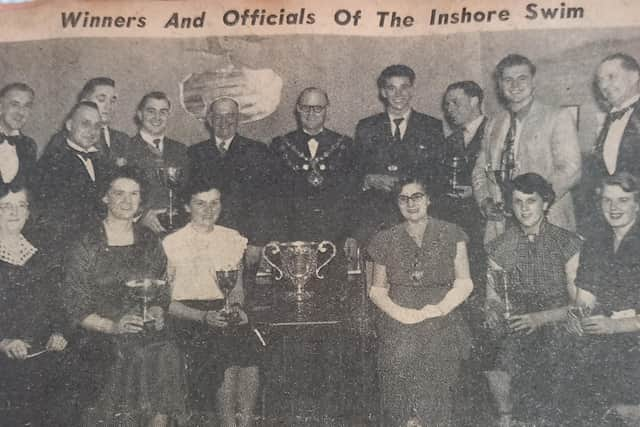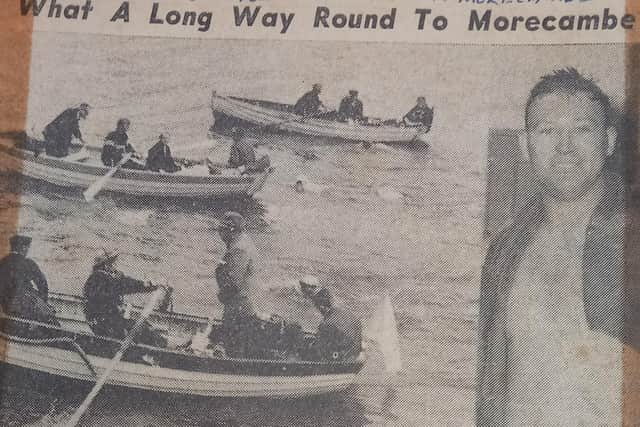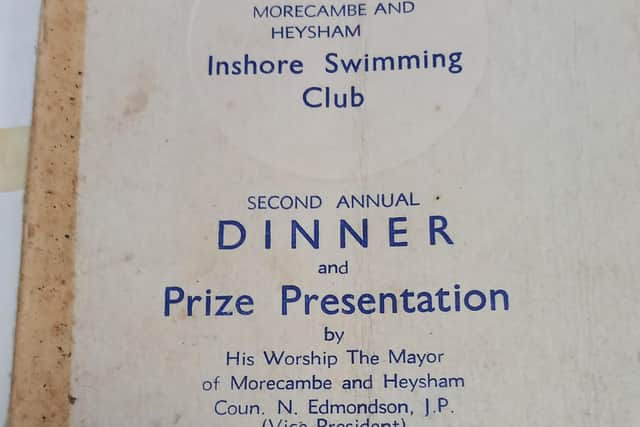Treasured old scrapbook reveals fascinating facts about the history of open water swimming in Morecambe Bay
and live on Freeview channel 276
Featuring press cuttings and photographs from the Fifties and Sixties, the scrapbook was compiled by Eamonn Crawford, a friend of Arthur Shipley who ran Morecambe and Heysham Inshore Swimming Club.
Mr Crawford later became timekeeper for the inshore swim when it moved to Pontins Holiday Camp at Middleton where his daughter, Suzie, held the ladies record and went on to be a national level swimmer.
Advertisement
Hide AdAdvertisement
Hide AdSuzie inherited the scrapbook and appealed on Facebook to anyone who might be interested in its contents. Step forward Jon Gibirdi, founder of Morecambe and Lancaster Lancashire Open Water Swimmers (M.A.L.L.O.W.S).


“I’ve been looking into the history of swimming in the bay and it’s surprising what I’ve learned from this scrapbook,” said Jon.
“When we swim in the bay nowadays, it’s quite nerve-wracking even though we’re in wetsuits and have all the equipment but swimmers then seemed just to wear swim suits which is quite impressive.”
Inshore swimming also seemed as popular with women as men and children took part too.
Advertisement
Hide AdAdvertisement
Hide AdThe scrapbook details inshore swims which set off from the Battery to Happy Mount Park before finishing at the former Central Pier.


It also includes swims in the River Lune, and a Lancaster to Morecambe swim which started at St George’s Quay and followed a route to Glasson Dock and Sunderland Point before finishing at the Stone Jetty.
Many swimmers from Yorkshire are featured in the scrapbook and Morecambe seemed to be popular for those training for the cross channel swim.
Interest in swimming in Morecambe developed from the late 1800s and by 1905, the Victoria Swimming Club of Bare and the West End Swimming Club were established.


Advertisement
Hide AdAdvertisement
Hide AdThey soon started to campaign for a pool to provide safer conditions not ruled by the tides.
However, cross bay swimming was seen as a challenge some couldn’t resist and the Morecambe Cross Bay Swimming Association was founded in 1907. Competitions attracted people from across the country and there’s even a statue to one of the most famous marathon swimmers – Commander ‘Gerry’ Forsberg – on the promenade.
Jon aims to keep Morecambe Bay’s swimming history alive by interviewing people involved and recording their stories online, and Suzie hopes her dad’s scrapbook might eventually go to a museum.
